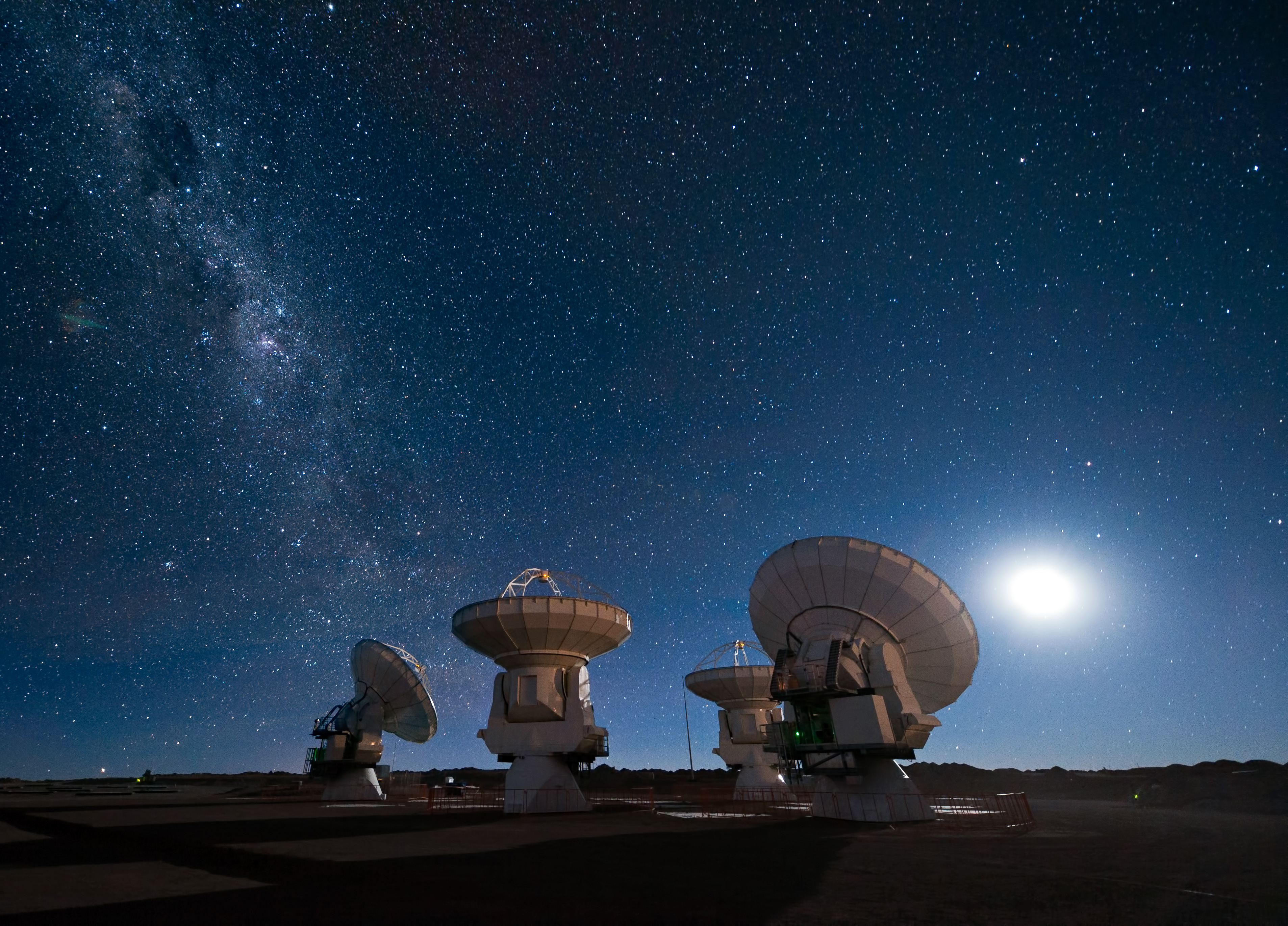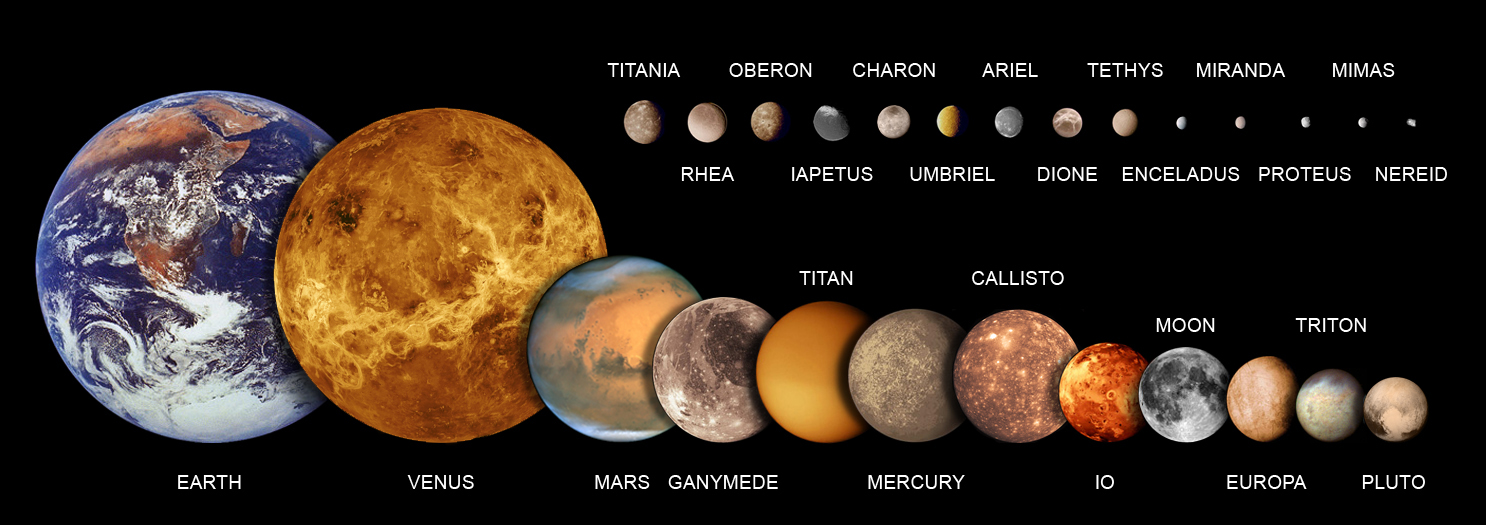|
Northern Extended Millimeter Array
The Northern Extended Millimeter Array (NOEMA) is one of the largest astronomical facilities on European ground and the most powerful radio telescope in the Northern Hemisphere operating at millimeter wavelengths. It consists of a large array of twelve 15-meter antennas that can spread over distances of up to 1.7 kilometers, working together as a single telescope. NOEMA is the successor of the Plateau de Bure Interferometer and is run by the international research institute IRAM (Institut de radioastronomie millimétrique). The observatory operates at over 2500 meters above sea level on one of the most extended European high altitude sites, the Plateau de Bure in the French Alps. Together with IRAM's second observatory, the IRAM 30-meter telescope, it is part of the global Event Horizon Telescope array. Operation Instead of operating one giant telescope, NOEMA relies on several smaller and easily movable antennas placed on tracks. Together, the NOEMA antennas have the reso ... [...More Info...] [...Related Items...] OR: [Wikipedia] [Google] [Baidu] |
Radio Telescope
A radio telescope is a specialized antenna and radio receiver used to detect radio waves from astronomical radio sources in the sky. Radio telescopes are the main observing instrument used in radio astronomy, which studies the radio frequency portion of the electromagnetic spectrum emitted by astronomical objects, just as optical telescopes are the main observing instrument used in traditional optical astronomy which studies the light wave portion of the spectrum coming from astronomical objects. Unlike optical telescopes, radio telescopes can be used in the daytime as well as at night. Since astronomical radio sources such as planets, stars, nebulas and galaxies are very far away, the radio waves coming from them are extremely weak, so radio telescopes require very large antennas to collect enough radio energy to study them, and extremely sensitive receiving equipment. Radio telescopes are typically large parabolic ("dish") antennas similar to those employed in tracking an ... [...More Info...] [...Related Items...] OR: [Wikipedia] [Google] [Baidu] |
Black Hole
A black hole is a region of spacetime where gravity is so strong that nothing, including light or other electromagnetic waves, has enough energy to escape it. The theory of general relativity predicts that a sufficiently compact mass can deform spacetime to form a black hole. The boundary of no escape is called the event horizon. Although it has a great effect on the fate and circumstances of an object crossing it, it has no locally detectable features according to general relativity. In many ways, a black hole acts like an ideal black body, as it reflects no light. Moreover, quantum field theory in curved spacetime predicts that event horizons emit Hawking radiation, with the same spectrum as a black body of a temperature inversely proportional to its mass. This temperature is of the order of billionths of a kelvin for stellar black holes, making it essentially impossible to observe directly. Objects whose gravitational fields are too strong for light to escape were fir ... [...More Info...] [...Related Items...] OR: [Wikipedia] [Google] [Baidu] |
Interferometric Telescopes
Interferometry is a technique which uses the '' interference'' of superimposed waves to extract information. Interferometry typically uses electromagnetic waves and is an important investigative technique in the fields of astronomy, fiber optics, engineering metrology, optical metrology, oceanography, seismology, spectroscopy (and its applications to chemistry), quantum mechanics, nuclear and particle physics, plasma physics, remote sensing, biomolecular interactions, surface profiling, microfluidics, mechanical stress/strain measurement, velocimetry, optometry, and making holograms. Interferometers are devices that extract information from interference. They are widely used in science and industry for the measurement of microscopic displacements, refractive index changes and surface irregularities. In the case with most interferometers, light from a single source is split into two beams that travel in different optical paths, which are then combined again to produce inter ... [...More Info...] [...Related Items...] OR: [Wikipedia] [Google] [Baidu] |
Radio Telescopes
A radio telescope is a specialized antenna and radio receiver used to detect radio waves from astronomical radio sources in the sky. Radio telescopes are the main observing instrument used in radio astronomy, which studies the radio frequency portion of the electromagnetic spectrum emitted by astronomical objects, just as optical telescopes are the main observing instrument used in traditional optical astronomy which studies the light wave portion of the spectrum coming from astronomical objects. Unlike optical telescopes, radio telescopes can be used in the daytime as well as at night. Since astronomical radio sources such as planets, stars, nebulas and galaxies are very far away, the radio waves coming from them are extremely weak, so radio telescopes require very large antennas to collect enough radio energy to study them, and extremely sensitive receiving equipment. Radio telescopes are typically large parabolic ("dish") antennas similar to those employed in tracking and c ... [...More Info...] [...Related Items...] OR: [Wikipedia] [Google] [Baidu] |
List Of Radio Telescopes
This is a list of radio telescopes – over one hundred – that are or have been used for radio astronomy. The list includes both single dishes and interferometric arrays. The list is sorted by region, then by name; unnamed telescopes are in reverse size order at the end of the list. The first radio telescope was invented in 1932, when Karl Jansky at Bell Telephone Laboratories observed radiation coming from the Milky Way. Africa Antarctica Asia Australia Europe North America South America Arctic Ocean Atlantic Ocean Indian Ocean Pacific Ocean Space-based Under construction or planned construction Proposed telescopes Gallery of big dishes File:FastTelescope*8sep2015.jpg, alt=Five hundred meter Aperture Spherical Telescope under construction, The 500 meter Five hundred meter Aperture Spherical Telescope (FAST), under construction, China (2016) File:GBT.png, alt=Green Bank Telescope, The 100 meter Green Bank Telescope ... [...More Info...] [...Related Items...] OR: [Wikipedia] [Google] [Baidu] |
List Of Interstellar And Circumstellar Molecules
This is a list of molecules that have been detected in the interstellar medium and circumstellar envelopes, grouped by the number of component atoms. The chemical formula is listed for each detected compound, along with any ionized form that has also been observed. Background The molecules listed below were detected through astronomical spectroscopy. Their spectral features arise because molecules either absorb or emit a photon of light when they transition between two molecular energy levels. The energy (and thus the wavelength) of the photon matches the energy difference between the levels involved. Molecular electronic transitions occur when one of the molecule's electrons moves between molecular orbitals, producing a spectral line in the ultraviolet, optical or near-infrared parts of the electromagnetic spectrum. Alternatively, a vibrational transition transfers quanta of energy to (or from) vibrations of molecular bonds, producing signatures in the mid- or far-infrared. ... [...More Info...] [...Related Items...] OR: [Wikipedia] [Google] [Baidu] |
GG Tauri
GG Tauri, often abbreviated as GG Tau, is a quintuple star system in the constellation Taurus. At a distance of about 450 light years (140 parsecs) away, it is located within the Taurus-Auriga Star Forming Region. The system comprises three stars orbiting each other in a hierarchical triple system, known as GG Tauri A, and another binary star system more distant from the central system, known as GG Tauri B. The system is unusual because it contains two distinct circumstellar disks: one surrounding the entirety of GG Tauri A, and another surrounding the brightest star of GG Tauri A. Its large size and close distance make it ideal to study how exoplanets form within multiple star systems. Properties GG Tauri consists of five stars, which are T Tauri stars – a class of variable stars that show irregular changes in brightness. These stars are extremely young and more luminous than their main sequence counterparts, because they have not condensed into the normal size yet ... [...More Info...] [...Related Items...] OR: [Wikipedia] [Google] [Baidu] |
Interstellar Matter
In astronomy, the interstellar medium is the matter and radiation that exist in the space between the star systems in a galaxy. This matter includes gas in ionic, atomic, and molecular form, as well as dust and cosmic rays. It fills interstellar space and blends smoothly into the surrounding intergalactic space. The energy that occupies the same volume, in the form of electromagnetic radiation, is the interstellar radiation field. The interstellar medium is composed of multiple phases distinguished by whether matter is ionic, atomic, or molecular, and the temperature and density of the matter. The interstellar medium is composed, primarily, of hydrogen, followed by helium with trace amounts of carbon, oxygen, and nitrogen. The thermal pressures of these phases are in rough equilibrium with one another. Magnetic fields and turbulent motions also provide pressure in the ISM, and are typically more important, dynamically, than the thermal pressure is. In the interstellar medium, m ... [...More Info...] [...Related Items...] OR: [Wikipedia] [Google] [Baidu] |
Planetary Object
A planetary-mass object (PMO), planemo, or planetary body is by geophysical definition of celestial objects any celestial object massive enough to achieve hydrostatic equilibrium (to be rounded under its own gravity), but not enough to sustain core fusion like a star. The purpose of this term is to refer to a broader range of celestial objects than the concept of planet, since many objects similar in geophysical terms do not conform to typical expectations for a planet. Planetary-mass objects can be quite distinguished in origin and location. Planetary-mass objects include dwarf planets, planetary-mass satellite or free-floating planemos, which may have been ejected from a system (rogue planets) or formed through cloud-collapse rather than accretion (sometimes called sub-brown dwarfs). Types Planetary-mass satellite The three largest satellites Ganymede, Callisto, and Titan are of similar size or larger than the planet Mercury; these and four more – Io, Moon, Euro ... [...More Info...] [...Related Items...] OR: [Wikipedia] [Google] [Baidu] |
Binary Star
A binary star is a system of two stars that are gravitationally bound to and in orbit around each other. Binary stars in the night sky that are seen as a single object to the naked eye are often resolved using a telescope as separate stars, in which case they are called ''visual binaries''. Many visual binaries have long orbital periods of several centuries or millennia and therefore have orbits which are uncertain or poorly known. They may also be detected by indirect techniques, such as spectroscopy (''spectroscopic binaries'') or astrometry (''astrometric binaries''). If a binary star happens to orbit in a plane along our line of sight, its components will eclipse and transit each other; these pairs are called ''eclipsing binaries'', or, together with other binaries that change brightness as they orbit, ''photometric binaries''. If components in binary star systems are close enough they can gravitationally distort their mutual outer stellar atmospheres. In some cases, ... [...More Info...] [...Related Items...] OR: [Wikipedia] [Google] [Baidu] |
Circumstellar Disc
A circumstellar disc (or circumstellar disk) is a torus, pancake or ring-shaped accretion disk of matter composed of gas, dust, planetesimals, asteroids, or collision fragments in orbit around a star. Around the youngest stars, they are the reservoirs of material out of which planets may form. Around mature stars, they indicate that planetesimal formation has taken place, and around white dwarfs, they indicate that planetary material survived the whole of stellar evolution. Such a disc can manifest itself in various ways. Young star According to the widely accepted model of star formation, sometimes referred to as the nebular hypothesis, a young star (protostar) is formed by the gravitational collapse of a pocket of matter within a giant molecular cloud. The infalling material possesses some amount of angular momentum, which results in the formation of a gaseous protoplanetary disc around the young, rotating star. The former is a rotating circumstellar disc of dense gas and ... [...More Info...] [...Related Items...] OR: [Wikipedia] [Google] [Baidu] |
Galaxy
A galaxy is a system of stars, stellar remnants, interstellar gas, dust, dark matter, bound together by gravity. The word is derived from the Greek ' (), literally 'milky', a reference to the Milky Way galaxy that contains the Solar System. Galaxies, averaging an estimated 100 million stars, range in size from dwarfs with less than a hundred million stars, to the largest galaxies known – supergiants with one hundred trillion stars, each orbiting its galaxy's center of mass. Most of the mass in a typical galaxy is in the form of dark matter, with only a few percent of that mass visible in the form of stars and nebulae. Supermassive black holes are a common feature at the centres of galaxies. Galaxies are categorized according to their visual morphology as elliptical, spiral, or irregular. Many are thought to have supermassive black holes at their centers. The Milky Way's central black hole, known as Sagittarius A*, has a mass four million times greater than the ... [...More Info...] [...Related Items...] OR: [Wikipedia] [Google] [Baidu] |


.jpg)






